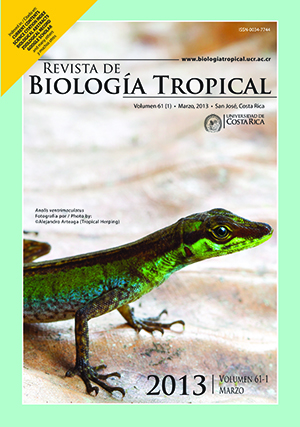Abstract
Little is known about the effects of the interaction of growth hormone (GH) with 17 a-methyltestosterone (17-MT) during fish growth. We evaluated this in the present study to assess the effect on fish growth. Fish in two batches of juvenile tilapia (Oreochromis niloticus) (approximately 5.0cm in length) were randomly assigned in triplicate to three treatments and a control group, distributed among 12 fiberglass tanks of 1 000L capacity (50 fish per tank) in an experiment covering a period of six weeks. The experimental groups were: a) fish treated with 17-MT and GH in mineral oil (RGH); b) fish treated with 17-MT and mineral oil without the addition of GH (R); c) fish treated with GH in mineral oil but not 17-MT (NGH); and d) fish of the control group, which were treated with mineral oil but not 17-MT or GH (N). The GH was injected into the fish at a rate of 0.625mg/g body weight. Morphometric data were recorded at the beginning of the experiment (T0) and at 15, 30 and 45 days (T15, T30 and T45), and various indicators of growth were assessed: condition factor (K); survival percentage (S), feed conversion rate (FCR), percentage weight gain (WG) and (v) daily weight gain. The optimum dietary level was calculated assuming 5% food conversion to total weight in each group. During the experiment, the fish were provided with a commercial food containing 45% protein. The data showed that GH injection resulted in a greater weight gain in fish treated with 17-MT (the RGH treatment group), being particularly significant increase in weight during T15 and T30 (p<0.05). High values of K were found in the R and RGH treatments during the initial days of the experiment, which may have been a consequence of the better nutritional status affecting both weight gain and growth in body length, as a result of the additive effects of 17-MT and GH. The fish in groups not treated with 17-MT and treated with 17-MT and added GH showed greater increases in WG per day, higher K values and lower FCRs than fish in the other groups, which suggests that greater feed efficiency occurred in the hormone-treated fish. Fish in the RGH treatment showed the most growth, suggesting a possible interaction between 17-MT and injected GH.##plugins.facebook.comentarios##
Downloads
Download data is not yet available.






